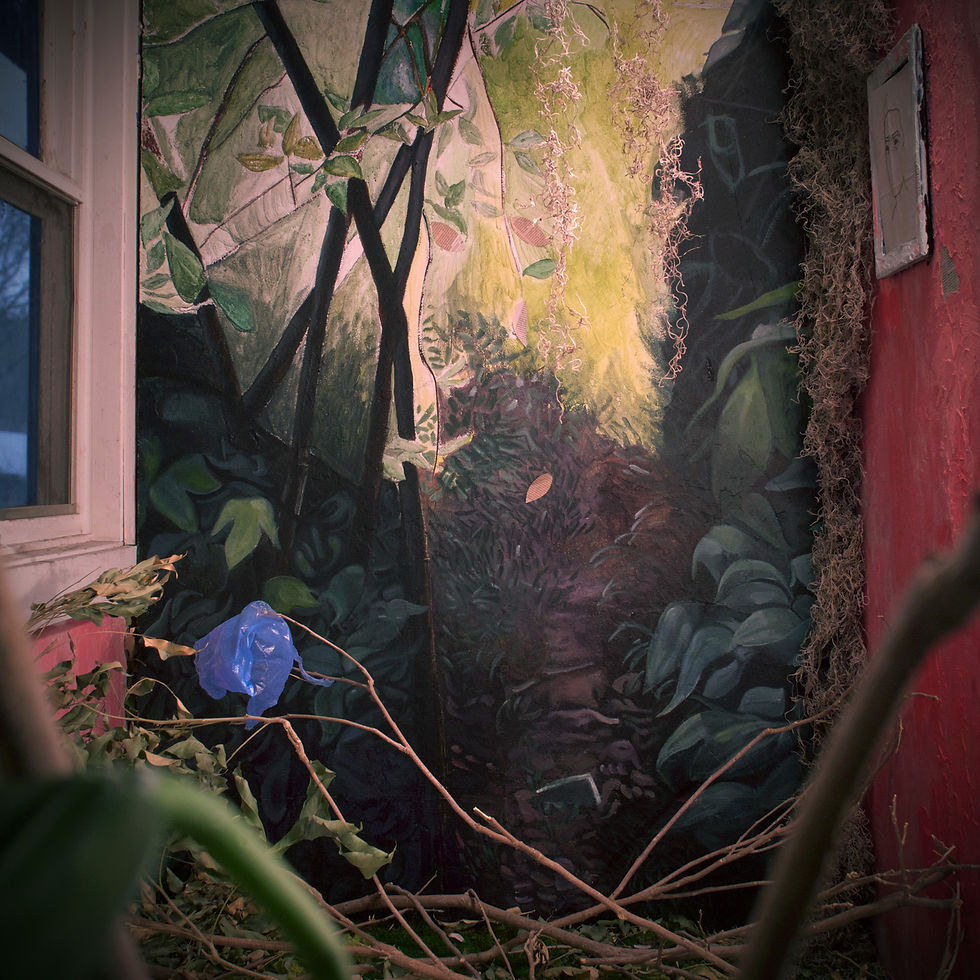Guess who's coming to dinner (or the last supper). Alma Leiva. February 2019. Elsewhere Museum, greensboro, NC. Video documentation of curated dinner in collaboration with Jennida Chase and Hassan Pitts. 9 min 2 secs. Inkjet prints, embroidery, and poetry on museum collection fabric; ongoing collection of stories. 264” x 138” in. Live music performance in collaboration with Joshua Marquez.

Embroidery process

Embroidery process

QR code detail.

Embroidery process

Interactive Greensboro, NC. Map image.2019.
Guess who’s coming to dinner (or the last supper) is a research-based interdisciplinary project that includes interactive, performance, and sensory elements. Inspired by Leiva’s grandmother who worked in a Florida tomato field in the 1980’s, this project is a response to the rising deportations of food industry workers in North Carolina. The project activates Elsewhere’s dining space through a tablecloth, web platform, poetry, a dinner event, and experimental sound performance. Guess Who encourages awareness about migration and labor through personal stories, pertinent statistics, and poetry that humanize this vulnerable demographic.
Through public engagement, Leiva facilitates a platform to bring this difficult conversation to the “table:” A concept she recalls in the title after Stanley Kramer’s 1967 film. Also recalling the table in Leonardo Da Vinci’s Last Supper painting, the project includes a hand-made tablecloth that pairs traditional “women crafts,” or the embroidery using inherited thread, with QR code technology. In the center, a printed, embroidered Greensboro map that resembles a living organism offers interactivity that takes participants to relevant information. On both ends, the tablecloth presents a split North Carolina state map with a poem by Leiva (translated by Walter Krochmal), dedicated to the workers in Spanish and English. In collaboration with local immigrant organization FaithAction, Leiva expands the conversation beyond the event’s inauguration by incorporating an expanding web platform that continuously features regional migrant workers’ personal stories.
In order to encourage engagement and critical thought, the artist served dishes during her opening exhibition using locally grown produce in collaboration with local artist Jennida Chase and videographer Hassan Pitts. The resulting food stains on the tablecloth become a growing archive of use. To add another layer, a responsive live experimental sound performance by composer Joshua Marquez played throughout the project’s inauguration. As a take-away memento, the artist handed custom printed napkins to the public.

From "Celdas"(Prison Cells), Celda #1 Installation into Photography 2009 34"x 34"

From "Celdas"(Prison Cells), Celda #2 Installation into Photography 2009 34"x 34"

From "Celdas"(Prison Cells), Celda #18 Installation into Photography 2018 34"x 34"

From "Celdas"(Prison Cells), Celda #1 Installation into Photography 2009 34"x 34"
Celdas (Prison Cells)
Through a diasporic, semi-autobiographical lens and from the subtext of U.S. policy in central America, "Celdas", seeks to address the experience of fear, displacement and isolation Hondurans experience due to the unspeakable violence that has taken over most of the region. Current inhumane anti-immigrant policies and political rhetoric aiming to dehumanize central Americans in the United States, contribute to the perpetuation of the trauma on vulnerable immigrant communities and asylum seekers at the U.S. border.
The research-based tableaux, which I construct and document throughout the U.S, with an image as the final form, are “counter-archives”(1) to direct representations of violence in the media. The nomadic process of this work helps me to more effectively convey the psychological trauma.
An important aspect of the work is the tension between cultural assimilation and the persistence of cultural identity and memory. “The presence of specific objects such as American pop music CD’s, flowers or candles, solicit an intimacy with the most private aspects of the lived experience"(1). By bringing natural elements such as leaves, sand or found materials from the area into the make-shift structures, alluding to working/poor class experiences, I recall the individual’s capacity of make-do.
Through magical realism, the feminine vernacular spaces blur the line between fiction and reality and introduce a dimension of pathos as they recall the need for sanctuary while alluding to coping mechanisms. To further the sense of poignancy, the play-scapes or scenes are informed by actual violent crimes, memorializing and humanizing some of the victims caught up in the endless cycle. The convergence of the public, domestic space and crime-site elements suggest the inevitability of violence's reach. The juxtaposition of Catholic and Maya iconography evokes the legacy of Spanish colonialism and reminds us that the history of violence in Central America has deep historic roots that predate the Conquest.
1. Excerpt from Counter-Archives to the narco-City Catalogue, The Other Side of Fear: Alma Leiva's Prison Cells,Tatiana Reinoza, 2015.